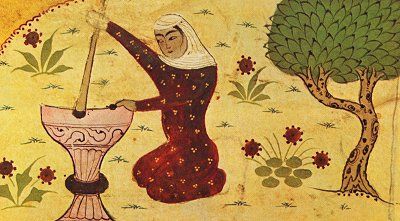Avoiding the allergen is the most effective treatment, but usually not possible all of the time. If you’re unable to stay indoors to ride out the season, then you will need to figure out how to best manage your allergies. Let's learn how you can eliminate or reduce your allergies:
- Filter the air in your house and car by using air conditioning or air purifiers. Use a micron allergy-grade filter in your ventilation system.
- Keep indoor air dry with a dehumidifier.
- Use a high-efficiency particulate air (HEPA) filter in your bedroom.
- Use protective covers on your bed and pillows to keep mold, dust and dust mites from escaping into the air. Wash sheets and blankets in water heated to at least 130 F (54 C).
- Regularly vacuum with a small-particle or HEPA filter and dust often.
- Rather than carpet, choose hard floor surfaces such as tile or wood where mold and dust mites cannot thrive.
- Make sure your home doesn’t have places where moisture collects to avoid mold growth. If you come back to your bathroom next day and you feel it is still wet or damp; you probably producing a lot of mold. It takes only one day for mold to develop.
- Stay indoors on dry, windy days — the best time to go outside is after a good rain, which helps clear pollen from the air. Avoid outdoor activity in the early morning when pollen counts are highest.
- Delegate lawn mowing, weed pulling and other gardening chores that stir up allergens.
- Remove clothes you have worn outside; you may also want to shower to rinse pollen from your skin and hair.
- Ban your pets from your bed or couch — pollen clings to pet's fur.
- Don't hang laundry outside — pollen will stick to them.
- A protective mask can be worn if you need to work outside when the pollen count is high.
- Check your local TV ,radio station, local newspaper, or internet for pollen forecasts and current pollen levels.
- If high pollen counts are forecasted, start taking your allergy medications if you are taking them before your symptoms start.
- Close doors and windows at night or any other time when pollen counts are high.
While some allergens can be “blocked”, there will likely be some left in the environment. It may be necessary to use conventional medicines when allergy symptoms are severe, there are therapies that can be used in conjunction with or as an alternative in mild or moderate cases. If you take prescribed medication, please talk with your doctor before adding new supplements to your regimen.
A saline solution can be used to rinse out your nasal passages. This will clear mucus and washes away allergens, therefore reducing their impact on your nose. It also helps reduce the risk of bacterial infections. Which in turn helps many people to avoid using antibiotics.
The simplest way to rinse out the nasal passage is with the neti pot. It looks like a little tea pot. It originates from a centuries old yoga tradition known as Hala neti. Always follow product instructions on how to prepare the saline solution and make sure you follow the recommended techniques for proper irrigation. Many allergy sufferers have found nasal irrigation to be the single most important thing in their seasonal allergy-fighting arsenal.
A saline solution can be used to rinse out your nasal passages. This will clear mucus and washes away allergens, therefore reducing their impact on your nose. It also helps reduce the risk of bacterial infections. Which in turn helps many people to avoid using antibiotics.
The simplest way to rinse out the nasal passage is with the neti pot. It looks like a little tea pot. It originates from a centuries old yoga tradition known as Hala neti. Always follow product instructions on how to prepare the saline solution and make sure you follow the recommended techniques for proper irrigation. Many allergy sufferers have found nasal irrigation to be the single most important thing in their seasonal allergy-fighting arsenal.
Eating an “anti-inflammatory” diet will also help. In addition to avoiding food allergies and food sensitivities, also eat plenty of antioxidant-rich fruits and vegetables and foods rich in omega-3 fats. Limit sugar and saturated and trans fats as these promote inflammation. Good food sources of omega 3 fats include fatty fish such as salmon, mackerel, tuna, and anchovies. Flaxseed and walnuts are the best plant-based sources of omega-3 fats.
Herbal extracts of the shrub butterbur may have some effectiveness in preventing seasonal allergy symptoms. If you do try butterbur, be sure to use a product that's labeled "PA free" which indicates its potentially toxic substances were removed. Other alternative therapies for seasonal allergies include cat's claw, choline, goldenseal, stinging nettle, belladonna and bromelain. Some people also claim locally produced honey helps reduce allergic reactions. Some people claim that probiotics, acupuncture and hypnosis may help with seasonal allergy symptoms. However, there's no solid evidence supporting the effectiveness of these treatments.




No comments:
Post a Comment